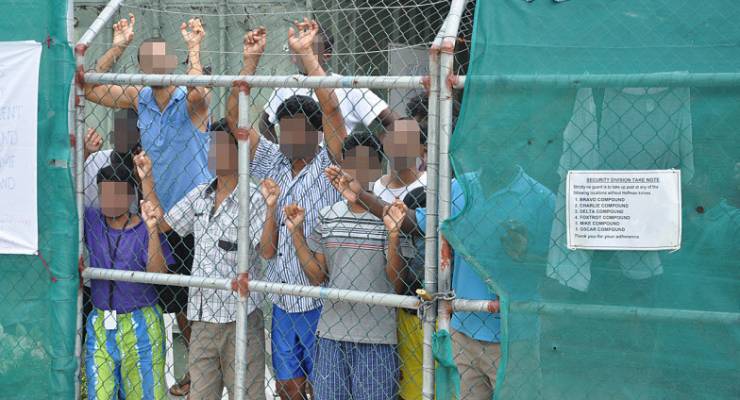
This is part two of Crikey‘s look into alternative border protection and asylum seeker policies. Read part one here.
Regional cooperation and pathways in the Asia Pacific
Any long-term solution would require regional cooperation, phasing out people smugglers with new governmental pathways, and identifying asylum seekers at their source. For example, responding to Myanmar’s Rohingya crisis with anything other than a “nope nope nope” would go a long way to reducing people’s need for riskier options.
The existing Bali Process offers a regional policy dialogue for ensuring the protection of refugees, as well as a means of raising regional awareness on boat journeys and safer passageways. And while the government has basically only worked with our neighbours on how to best trap their asylum seekers, we have research from groups such as the Kaldor Centre for International Refugee Law and the Asia Pacific Refugee Rights Network on how Australia can best take responsibility for asylum seekers in our region, target people smuggling operations, and offer coordinated, funded, and safer new passageways.
Political reality: While there have been token announcements from Julie Bishop’s office on this matter, the Coalition have yet to really do anything here (unless you count cooperating with Sri Lanka on the whole torture thing). It’s also touchy option for Labor after the failed Malaysia Solution.
Visa reform
As a way of both empowering people seeking asylum and helping coordinate the entire process, UNICEF have a list of suggestions to make visa applications easier, quicker and more secure. This includes distributing visa information in relevant languages, opening departmental outposts in key overseas locations, and waiving or deferring fees and requirements.
Political reality: Almost impossible under the Coalition, who have only made the system less stable by reintroducing bridging visas and even moved to increase income requirements for family reunion visas. This would need a complete 180 from Dutton.
Initiate search and rescue operations
Most (but not all) refugee activists are calling to phase out turn-backs, demilitarise our immigration system, and repurpose our existing “ring of steel” border officials to instead actively rescue every person asking for our help.
At a stretch, some groups have even advocated for a more humanitarian version of “turn-backs” where, instead of illegally and dangerously pushing people seeking asylum by boat back to wherever, Australia temporarily brings them to one of those aforementioned processing centres, or even Manus Island/Nauru, quickly processes them (under 90 days), then finds them asylum either here or within another country that has signed the UN Refugee Convention (i.e. New Zealand, Canada, US). The theory being that Australia would ensure refugees find asylum regardless of their means of transport, while also disrupting people smuggling operations.
And yes, even with all those other options in place, an Australia without indefinite detention or turn-backs could see a rise in people exercising their right to seek asylum by boat. But instead of ignoring them and the entirely legitimate concern of deaths at sea (which, as one particularly tragic case demonstrated, we sometimes did even under Rudd), Australia could use those billions from offshore detention to instead maybe help people.
Political reality: Next to impossible in the current climate. There’s no way the Coalition as it is stands would support boat arrivals and, while there are Labor Left factions pressuring the party, Shorten and co are still keen to put as much distance between their current policies and Rudd 1.0. However, they continue to claim they would only to support turn-backs “where safe to do so”: considering this is absolutely not the current case, that might be an in for the “humanitarian turnbacks” option.








Good analysis, Chris.
Will you stop inventing new ways to get around the law. The fact is refugee law is clear – everyone has the right to seek asylum, they do not have to stay in dangerous nations who don’t assess their claims, it’s not up to the UNHCR, it’s up to signatory states and we are the only major state in the region.
FFS if you want to comment find out what the law is
The elephant in the detention camp that many will not acknowledge is that few refugees/asylum seekers have the resources to fly to Indonesia, kick their heels for an indefinite period before finding a $10,000 berth on the traditional leaky boat.
The only way to ensure that this country is not scammed is to source the refugee intake – double it, treble it, whatever – from those found to have valid claims by the UNHCR.
Thoughtful piece Chris.
But just once, I’d love to read an account of the current clusterf*ck that makes no mention of “people smuggling”. It’s such an inflammatory term and it adds nothing to the debate. Refugees require help as they flee persecution. Demonising those who help them does nothing to make their situation better.
mind you we could always do the bleeding obvious…STOP selling armaments and ammunition to the dictatorships and all the “rogue states”. Guess what would occur… there wouldn’t be 20million humans roaming the world looking for a place of safety.
They would be in their home countries where they would prefer to be instead of grabbing the kids and running for their lives…